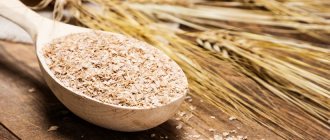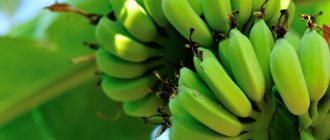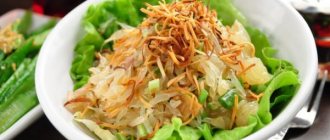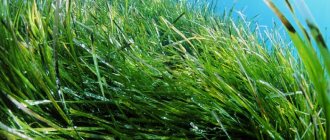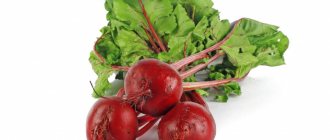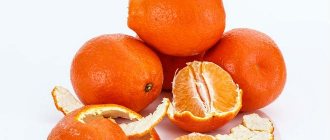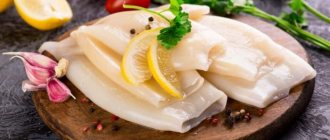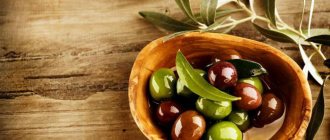© mira_y — stock.adobe.com
Share:
Bran is a product that has valuable nutritional properties, gives a feeling of fullness for a long time and does not transform into fat deposits. The most popular types of bran include wheat, oat, rye and corn. Rice, flaxseed, buckwheat and barley are no less useful. Bran contains a unique set of useful components and dietary fiber, which improve the functioning of the body as a whole and promote weight loss.
What it is
People often hear about the beneficial and medicinal properties of bran, but not everyone knows what it is. Bran is a by-product obtained during the processing of whole grain flour.
Bran is the hard shell (skin) of the grain or grain germ. The hard shell is removed from the grain during the process of cleaning (grinding) and bleaching and consists of almost 100% plant fiber.
The grain skin varies in degree of grinding and can be large, in which case the bran is coarse, and fine, in which case the by-product is called fine.
Bran is practically not absorbed by the human body, and therefore does not lead to weight gain, but creates a feeling of satiety. Passing through the esophagus, bran first settles in the stomach and swells, and then passes unhindered through the intestines, simultaneously removing decay products, toxins and waste.
Wheat bran for face
To prepare a nourishing face mask, you need to mix two tablespoons of the product with 50 ml. warm milk, stir and leave for 2-3 hours to swell.
Apply the mask with massage movements onto clean facial skin, rinse after 20 minutes with warm water. This procedure can be used every day.
Wheat bran: advantages and contraindications
Composition, BZHU and calorie content
Depending on the type of bran, the chemical composition, caloric content of the product and the ratio of BJU change. Bran is a healthy product; it should be included in the diet of people who adhere to a healthy and proper diet (DN), as well as athletes due to the rich content of fiber, vitamins and useful minerals in the composition.
Nutritional value of the most common varieties of bran per 100 g:
| Variety | Dietary fiber, g | Calorie content, kcal | Proteins, g | Carbohydrates, g | Fats, g |
| Oatmeal | 15,3 | 245,6 | 17,4 | 50,6 | 7,1 |
| Rice | 20,9 | 315,8 | 13,3 | 28,6 | 20,7 |
| Linen | – | 250,1 | 30,1 | 9,9 | 10,1 |
| Wheat | 43,5 | 165,5 | 16,1 | 16,7 | 3,8 |
| Rye | 43,5 | 114,3 | 12,3 | 8,6 | 3,4 |
| Corn | 79,1 | 223,6 | 8,3 | 6,7 | 0,9 |
A tablespoon contains 15 g of bran, therefore, the calorie content of this amount is calculated depending on the type of product.
The ratio of BJU per 100 grams is respectively:
| Bran | BJU |
| Corn | 1/0,1/0,9 |
| Rye | 1/0,3/0,7 |
| Wheat | 1/0,2/1 |
| Linen | 1/0,3/0,4 |
| Rice | 1/1,7/2,2 |
| Oatmeal | 1/0,4/2,8 |
Rye, oat, and wheat bran are best suited for dietary nutrition.
The chemical composition of bran per 100 g is presented in the form of a table:
| Name of elements | Oatmeal | Rice | Wheat | Rye | Corn |
| Selenium | 45.2 mcg | 15.6 mcg | 77.5 mg | – | 16.8 mcg |
| Iron | 5.42 mg | 18.55 mg | 14.1 mg | 10.1 mg | 2.8 mg |
| Copper | 0.4 mg | 0.79 mg | 0.99 mg | 0.8 mg | 0.3 mg |
| Manganese | 5.56 mg | 14.3 mg | 11.4 mg | 6.9 mg | 0.14 mg |
| Potassium | 566.1 mg | 1484 mg | 1256 mg | 1206 mg | 44.1 mg |
| Magnesium | 235.1 mg | 782 mg | 447.8 mg | 447.6 mg | 63.5 mg |
| Phosphorus | 734.1 mg | 1676 mg | 951.1 mg | 310.1 mg | 72.1 mg |
| Calcium | 57.8 mg | 56 mg | 151 mg | 229.2 mg | 41.6 mg |
| Sodium | 4.1 mg | 5 mg | 8.1 mg | 61.0 mg | 7.2 mg |
| Thiamine | 1.18 mg | 2.8 mg | 0.76 mg | 0.53 mg | 0.02 mg |
| Kholin | 32.1 mg | 32.3 mg | 74.3 mg | – | 18.2 mg |
| Vitamin PP | 0.94 mg | 33.9 mg | 13.6 mg | 2.06 mg | 2.74 mg |
| Vitamin B6 | 0.17 mg | 4.1 mg | 1.3 mg | – | 0.16 mg |
| Vitamin E | 1.01 mg | 4.9 mg | 10.3 mg | 1.6 mg | 0.43 mg |
| Vitamin K | 3.3 mcg | 1.8 mcg | 1.9 mcg | – | 0.32 mcg |
In addition, each type of product contains a large amount of fiber, plant fibers, as well as poly- and monounsaturated fatty acids.
Calorie content of rye bran
The calorie content of this bran is 220 calories per 100 grams. Doctors believe that rye is the healthiest, and it is advisable to buy it in powder form. Like wheat, they contain more insoluble fiber.
Their main difference from their “brothers” is their rich mineral composition and unsaturated fatty acids. They are also tougher, so rye ones cannot be used for baking in their pure form.
You need to either add flour, which will increase the calorie content and reduce the beneficial properties, or eat it as a snack with liquid. Rye bread and bran decoction are used for problems of the gastrointestinal tract.
The benefits of bran for the body
Vitamins, fiber, as well as micro- and macroelements, which are part of absolutely all bran, bring benefits to the female and male body, namely:
- Systematic consumption of bran alone or as a food additive, for example, in bread, serves as a prevention of diseases such as chronic colitis and diverticulosis.
- The product reduces the level of “bad” cholesterol in the blood and normalizes blood pressure.
- Bran serves as a preventive measure for the development of atherosclerosis.
- The beneficial properties of bran for diabetes include a positive effect on the process of breaking down starch in the blood and the ability to lower the glycemic index of the product.
- You can lose extra pounds if you include bran in your diet, for example, rye or wheat, by reducing the feeling of hunger.
- Bran accelerates metabolism. Fiber itself does not initiate the process of burning subcutaneous fat, but it directly affects the cause of excess weight, namely the metabolic process.
- Heart function will improve if you take the hard shells of grains at least a couple of times a week. Excess fluid will be removed from the body and swelling will go away.
- The product is useful for hypertension, as it has vasodilating properties.
- Bran (of any variety: corn, flax, rice, oat, etc.) has a healing effect on the functioning of the intestines, relieves constipation and removes waste and toxins from the colon. When used systematically, the product normalizes the functioning of the gastrointestinal tract as a whole.
It is recommended to eat the grain shells during the recovery period after a serious illness or surgery, as well as after exhausting sports marathons or competitions.
The most useful are ground bran rather than granulated bran, since sugar, salt or flavor enhancers can be added to the latter. A high-quality product is practically odorless and does not have a pronounced taste.
© Rozmarina — stock.adobe.com
What they look like
The outer shell of the grain is oat bran; in flour milling it is considered waste because it gives the flour a rough consistency and appearance. The purified product is an odorless gray powder, sometimes granulated and extruded. All varieties are sold in transparent or colored bags and may contain additional additives. You shouldn’t crunch them in the form of pillows or crackers, it’s too high in calories and harmful for weight loss.
How to take bran correctly when losing weight
You cannot eat bran in unlimited quantities, even despite the extensive list of beneficial properties of the product. It is correct to take a weight loss product in the amount of 20-40 grams per day, but no more.
The shells of the grains are allowed to be consumed only in combination with water, otherwise there will be no beneficial effect. You need to take bran (oatmeal, rye, etc.), pour boiling water over it, and leave for 20-30 minutes. Then drain off the excess liquid and only then add to any dishes.
Dietary fiber, which promotes weight loss, works only if the product absorbs moisture and increases in volume.
The first intake of dietary bran for an adult should start with 1 teaspoon per day, and only after 2 weeks of use can the dose be increased to 2 tablespoons per day.
The process of losing weight is accelerated due to the fact that the hard shells of grains improve intestinal function, help remove excess fluid from the body and speed up metabolism. After eating food with bran, the stomach retains a feeling of fullness for a long time - the bran swells and fills most of the volume of the stomach.
There are many different diets using the product, but in each of them, bran is an auxiliary product, and not the main source of energy and not the only food product.
© Olaf Speier — stock.adobe.com
The use of bran in cosmetology
The described product is not only used in folk medicine. He has proven himself excellent in cosmetology. Natural masks can be made from oat bran to eliminate oily skin and hair problems. The product is also an excellent way to cleanse the body of dead skin particles by scrubbing.
For facial cleansing
To clear your face of blackheads and give your skin a beautiful shine, you can use a special bran mask. It is easy to make at home.
We recommend learning how to make an almond oil face mask.
Method of preparation and use of a mask for cleansing the skin of the face and neck:
- Soften bran in an amount of 20 g with warm water until smooth.
- Apply the resulting mixture to cleansed skin of the face and neck.
- Using light, circular movements, rub the substance into the epithelium for 2–3 minutes.
- Rinse with warm water, pat your face with a napkin or towel.
- Carry out the procedure 3 times a week.
Nutrition for the whole body
The body, just like the face, needs nutrition and hydration. In order for the skin to become soft and silky, 2 times a week you need to take baths with an infusion of oat bran.
Preparation and use:
- Steam 100 g of bran in 400 ml of boiling water for an hour.
- Strain the resulting mixture and squeeze.
- Add the infusion to the bath for bathing.
Facial peeling
To peel the facial skin, you need to choose finely ground bran. They can be mixed into foam for washing or liquid soap. Apply with gentle circular movements onto the skin of the face and neck, rinse with warm water. The effect of such washing will be noticeable from the first time, because the epithelium will become more elastic, small wrinkles will be smoothed out. Peeling also copes well with such problems as blackheads. The procedure is carried out 3 times a week before bedtime.
For oily skin
To refresh and eliminate oily skin, use a mask with lemon and oat bran.
To make it you need:
- lemon juice - 20 ml;
- bran - 20 g;
- water - 50 ml.
Preparation and use:
- Steam the bran in boiling water for 30 minutes.
- Add lemon juice to the pulp.
- Apply the resulting mask to the face for 15 minutes, avoiding the area around the eyes.
- The procedure is carried out 2 times a week.
For hair
Hair is the treasure of any woman. To make them look smooth and silky, use a decoction of oat bran.
It will be useful for you to learn how to make a hair mask with ginger oil.
Preparation and use:
- Boil 200 g of oat bran in 400 ml of water for 10 minutes.
- Cool the resulting substance and boil again for 5 minutes.
- After cooling to a temperature of +37°C, strain and apply to the scalp and the entire length of the hair.
- Wrap your head in a towel and wait 30 minutes.
- Rinse off with warm water.
- Repeat the procedure 2 times a week.
Harm of bran to health and contraindications
Exceeding the daily intake of bran can cause side effects and harm human health. It is contraindicated to use any of the varieties of bran during exacerbation of the following diseases:
- gastritis;
- stomach ulcer;
- enteritis.
After the exacerbation passes, you can return bran to the diet in the amount of 1 teaspoon. In addition, it is strictly forbidden to eat the product if you are allergic to grains.
Systematic abuse of the product will lead to exacerbation of gastrointestinal diseases, flatulence, indigestion, and hypovitaminosis.
You can increase the daily dose of bran only on the recommendation of a nutritionist, and it is recommended to do this gradually.
© nolonely — stock.adobe.com
Can children have wheat bran?
Pediatricians recommend starting your first acquaintance with a new product at the age of two and only with half a teaspoon. Be sure to pre-soak in hot water.
Maintain this norm for a week and monitor the child’s body. If no negative reaction was observed, the dose can be increased. It is advisable not to give wheat bran to children as an independent product, but to add it to the main food.
Children can prepare soups using a decoction of wheat bran. To do this, pour boiling water over one teaspoon of the product, simmer for another 15 minutes over low heat, and strain. The decoction is useful for making soups, and the bran itself can be added to children's porridge or any other dishes.
What is the difference between oat bran and oatmeal?
Many useful products for weight loss are made from oats; the most popular are flakes and bran, these are different products. Here's what makes oatmeal different:
- flakes are made from grains that have been peeled, and bran is made from the hard shell of the grain;
- cereals are more caloric – 240 kcal versus 160;
- the flakes contain more zinc, but less vitamin E and K, iron, potassium, phosphorus, and monounsaturated fats;
- Oatmeal does not contain soluble fiber such as beta-glucan, which is necessary for healthy intestinal function.
How to make oat bran at home
Much to the chagrin of all those who are losing weight, you cannot make bran yourself. This is a product of flour production, which is obtained by separating the shell of grain. You can try to grind whole grains in a coffee grinder, but you won’t be able to get a pure product without flour inclusions. It is also not worth grinding the flakes - this is a ready-made purified product, it does not contain the necessary fiber. Losing weight with oat bran involves purchasing the product in pharmacies, stores or markets where the purified product is sold.
